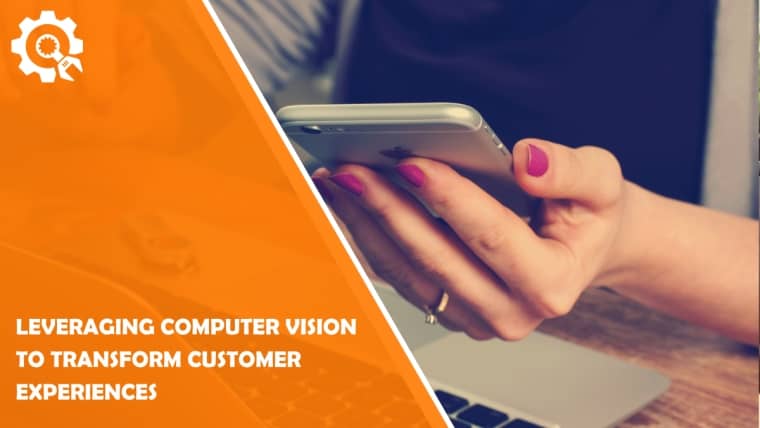Tech companies have long dreamed of a world where technology can understand what we’re doing and how we feel. We’re getting closer than ever to that world becoming a reality. Computer vision technology has progressed so far that it can now detect emotions, identify faces, and even read lips (among other things). This means that businesses can use these technologies to improve the user experience in ways we could never have imagined just 10 years ago. The possibilities for this kind of technology are endless: from detecting if someone is having an allergic reaction or if they need help with their order, all the way down to knowing when people need assistance walking through airports or malls – the list goes on!
Understanding Computer Vision
Computer vision, a subfield of artificial intelligence (AI), is dedicated to enabling computers to interpret images and videos. Unlike machine learning, which is a broader category encompassing computer vision, machine learning algorithms learn tasks by analyzing large datasets and making predictions or decisions based on that information. In contrast, computer vision systems are trained on specific datasets and then applied without further human intervention.
When discussing commercial products like cameras or smartphones, terms like computer vision, image processing, and deep learning are often used interchangeably, even though these technologies may employ different approaches for image recognition. These devices showcase the diverse techniques harnessed in the pursuit of visual intelligence.
For a more in-depth exploration of Computer Vision Development and its applications, you can find valuable insights at https://chisw.com/services/computer-vision-development/.
Applications of Computer Vision in Customer Experiences
Computer vision is a powerful tool that can be used to enhance customer experiences in many ways. Here’s an overview of some of the most important applications:
- Facial Recognition. As more people shop online and on their mobile devices, facial recognition technology allows e-commerce sites to personalize the experience by detecting who’s viewing the site or app and what they look like, then displaying relevant products based on past purchases and browsing history. For instance, if you buy men’s shoes from Zappos and then visit their website again later that day or even later that week you’ll likely see ads for men’s shoes when you open up another tab in your browser window (and maybe even get notified via push notification).
- Augmented Reality / Virtual Reality (AR/VR). AR/VR are two very different technologies, but both have one thing in common: They allow customers to interact with digital environments as if they were real-life objects! In this case, businesses would be able to place 3D models within their physical location, so customers could pick them up before purchasing them online later on down the road without ever having visited beforehand.
Facial Recognition for Personalized Services
Facial recognition can be used to identify VIP customers and to ensure they receive the best service. For example, if you’re a high-end cosmetics store, and you want to provide personal attention for your most valued clients, facial recognition technology can help you identify those individuals and direct them toward special treatment. Facial recognition also allows retailers to ban certain customers from entering the store or paying with credit cards. In fact, some companies are already using facial recognition as an anti-shoplifting tool: when someone enters a retail location wearing sunglasses or a hat that obscures their face (common tactics used by shoplifters), they’ll be denied entry into the premises unless they remove their disguise first!
Augmented Reality (AR) in Retail
Augmented Reality (AR) is a technology that allows users to interact with digital content in their physical environment. For example, you can use AR to see what furniture looks like in your room before purchasing it, or view how clothes would look on you before buying them.
AR has been used in retail since its inception and continues to be an integral part of modern shopping experiences. Customers are able to see products they want without having to leave home, making it easier than ever for shoppers who want convenience and speed when making purchases. Retailers can also use AR technology as a way of educating consumers about their products or services through interactive demonstrations that showcase different features in real time.
Visual Search in E-Commerce
Visual search is the process of using images (usually from a smartphone) to search for similar images. For example, if you want to buy an outfit like one you saw on a celebrity or in a magazine, all you have to do is take a picture of it and then let your phone do the rest it’ll find similar items for sale online so that you can easily purchase them. This technology has been around since 2013 when Google first introduced Lens on its Pixel 2 smartphone.
It’s also used by companies like Pinterest and Instagram as well as Snapchat’s Lens Explorer feature which allows users to create their own custom lenses based on still photos or video clips taken from their phones’ cameras instead of using pre-existing templates provided by Snapchat itself.
In addition to Lens and Snapchat’s Explorer feature, there are many other uses for visual search. It can also be used to find similar items on eBay or Amazon by scanning barcodes with your phone’s camera, as well as reading text in books using OCR software.
We are at the beginning of a new era in customer experiences. The rise of artificial intelligence (AI) and computer vision will enable companies to create personalized, customized experiences for their customers, which will help drive loyalty and retention rates higher than ever before.
